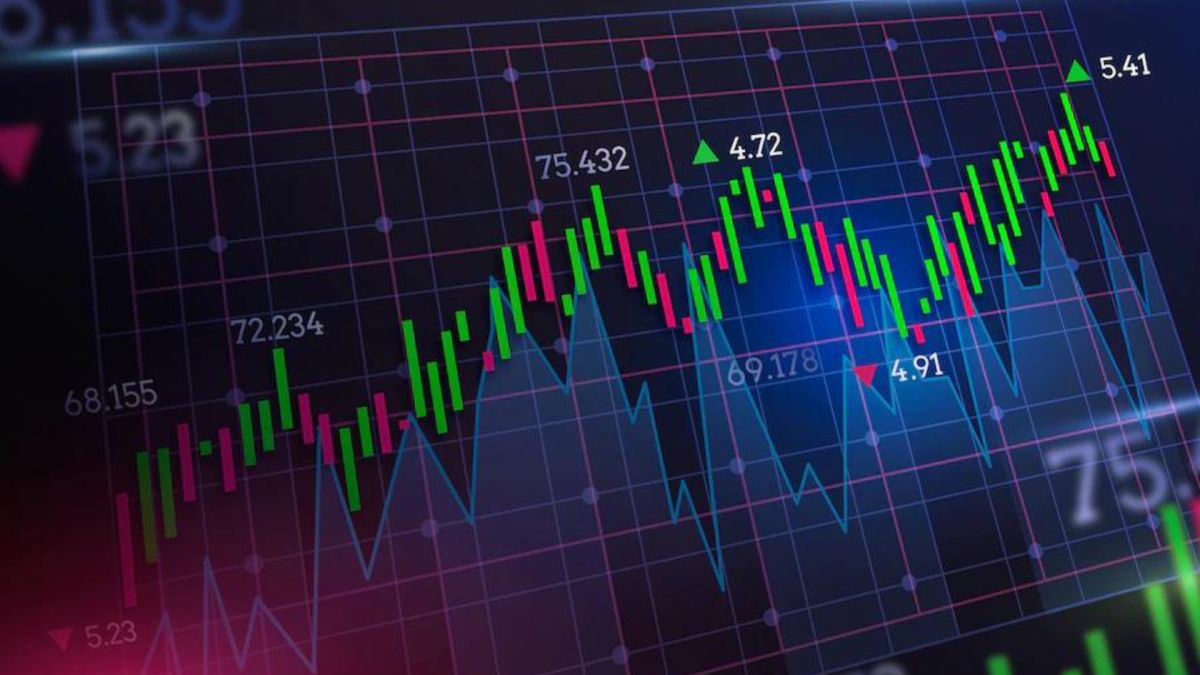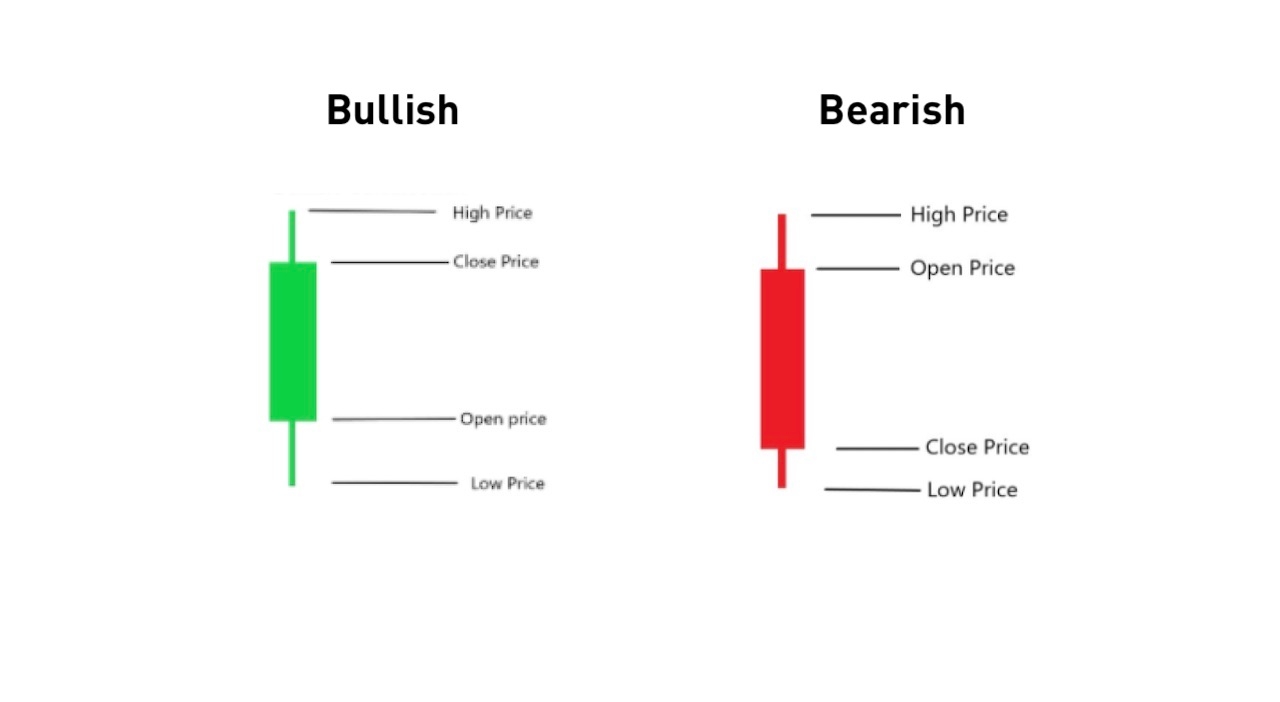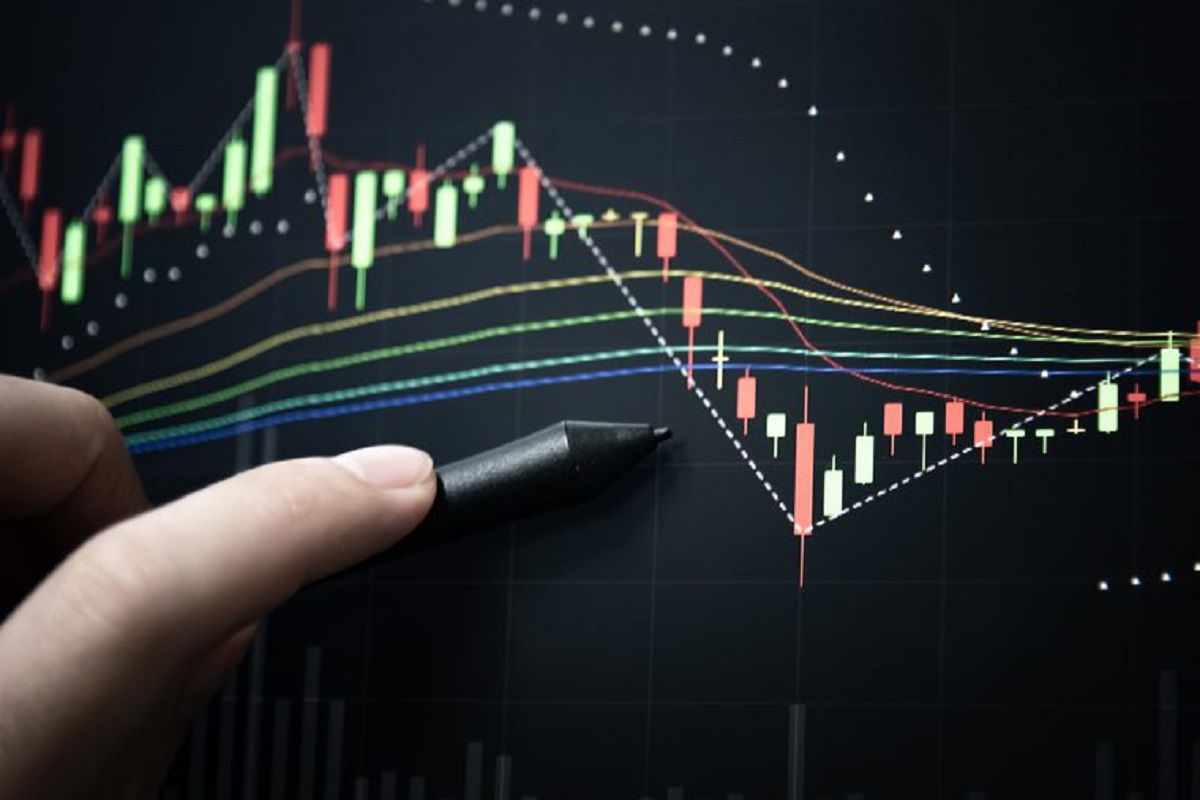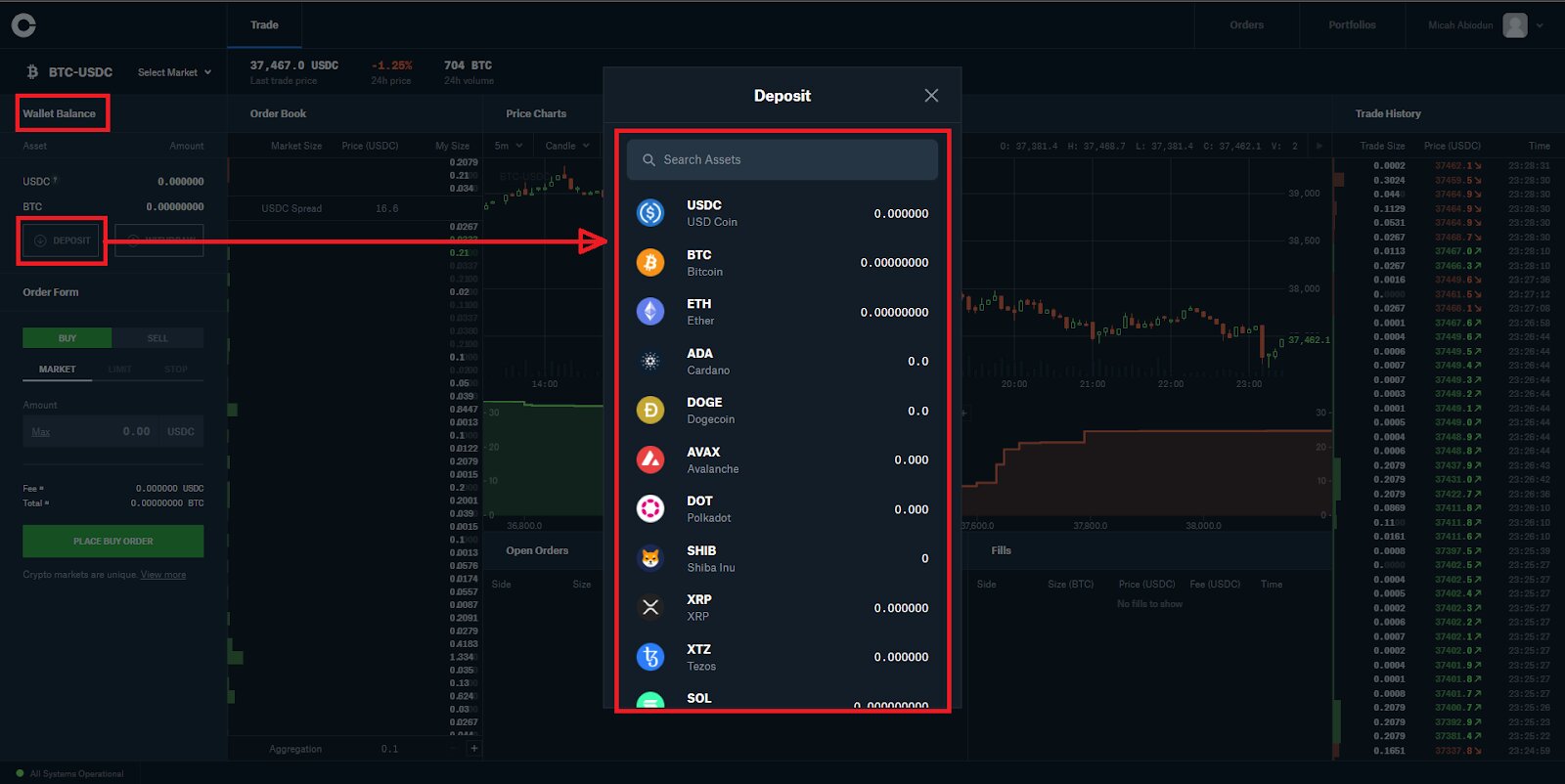Introduction
Welcome to the world of cryptocurrency charts, where numbers and lines hold the key to analyzing and predicting market trends. As a crypto enthusiast or a curious investor, understanding how to read these charts is a fundamental skill that can help you make informed decisions and potentially maximize your profits.
Cryptocurrency charts provide a visual representation of the price, volume, and other market data of various digital assets. These charts enable traders and investors to analyze historical patterns, identify trends, and predict future price movements. By effectively interpreting the information presented in these charts, you can gain valuable insights into market behavior and improve your trading strategies.
In this article, we will explore the basics of cryptocurrency charts, delve into different types of charts, and understand the key components that contribute to their analysis. Furthermore, we will explore technical indicators, candlestick patterns, and other tools that are commonly used to interpret these charts.
It’s important to note that while cryptocurrency charts can provide valuable insights, they are not infallible guides to predicting market movements. Crypto markets are highly volatile and influenced by numerous factors, including market sentiment, global events, and regulatory developments. Therefore, thorough research, a diversified portfolio, and risk management are crucial elements for successful cryptocurrency trading.
Whether you are a seasoned trader or just starting your crypto journey, mastering the art of reading cryptocurrency charts can empower you with a deeper understanding of market dynamics and improve your decision-making capabilities. So, let’s dive in and uncover the secrets that lie within these charts.
Basics of Cryptocurrency Charts
Before we delve into the intricacies of analyzing cryptocurrency charts, it’s essential to familiarize yourself with the basic elements that make up these charts. Understanding these key components will provide a solid foundation for interpreting and analyzing the data.
The most common type of cryptocurrency chart is the price chart, which illustrates the historical price movements of a specific cryptocurrency over a given time period. Price charts typically display the price on the vertical axis (Y-axis) and the time on the horizontal axis (X-axis).
Additionally, there are two main types of price charts: line charts and candlestick charts. Line charts present the closing price of the cryptocurrency at each time interval, connecting these points with a line. On the other hand, candlestick charts provide a more detailed view of price movements, displaying the opening, closing, high, and low prices for each period. Candlestick charts visually represent each period as a “candle,” with the body showing the opening and closing prices and the wicks or shadows indicating the high and low prices.
Volume is another crucial element that is commonly shown in cryptocurrency charts. Volume represents the total amount of a particular cryptocurrency traded within a given time period. It is usually displayed as a histogram or a bar chart beneath the price chart. Volume provides insights into the strength and significance of price movements. High volume during price fluctuations indicates increased buying or selling pressure, while low volume may suggest a lack of market interest or a period of consolidation.
Timeframes play a crucial role in cryptocurrency charts as they determine the granularity of the data. Timeframes range from minutes to weeks or even months, allowing traders to analyze short-term and long-term price patterns. Shorter timeframes provide more granular data, revealing rapid price fluctuations, while longer timeframes offer a broader perspective and help identify major trends and support/resistance levels.
Now that you have a solid understanding of the basics of cryptocurrency charts, including price charts, volume, and timeframes, you are ready to dive deeper into the various types of charts and the components that contribute to their analysis.
Types of Cryptocurrency Charts
Cryptocurrency charts come in various types, each providing slightly different representations of price movements and market data. Understanding these different chart types can help you gain a comprehensive view of market trends and make more informed trading decisions.
1. Line Charts: The simplest and most commonly used chart type is the line chart. It connects the closing prices of a cryptocurrency over a specific time period, forming a continuous line. Line charts provide a smooth, bird’s-eye view of price movements, making it easier to identify trends and key support and resistance levels.
2. Candlestick Charts: Candlestick charts, also known as Japanese candlestick charts, are widely used by traders due to their ability to provide detailed information. Each candlestick represents a specific time period and displays the opening, closing, high, and low prices. The body of the candlestick is filled or hollow, indicating whether the closing price is higher or lower than the opening price. Candlestick patterns can offer valuable insights into market sentiment and potential price reversals.
3. Bar Charts: Similar to candlestick charts, bar charts display the opening, closing, high, and low prices for each time period. However, instead of candlesticks, they use vertical lines (bars) with small horizontal dashes indicating the opening and closing prices. Bar charts provide a straightforward representation of price movements and also allow for the visualization of volume data.
4. Renko Charts: Renko charts focus solely on price movements and ignore time and volume. Each Renko block represents a fixed price movement, and new blocks are added only when the price surpasses the predefined threshold. Renko charts are useful for filtering out noise and identifying significant price trends.
5. Point and Figure Charts: Point and Figure charts use a unique method of plotting price movements. Instead of time and price axes, these charts rely on columns of X’s and O’s. X’s represent upward price movements, while O’s represent downward price movements. Point and Figure charts help identify the strength and duration of trends.
By exploring the different types of cryptocurrency charts, you can choose the one that best suits your trading style and preferences. Combining multiple chart types or using different types for different analyses can further enhance your understanding of market dynamics and improve your decision-making process.
Understanding Price and Volume
Price and volume are two critical components of cryptocurrency charts that provide valuable insights into market dynamics and help traders make informed decisions. Understanding how price and volume interact can enhance your ability to analyze trends and identify potential buying or selling opportunities.
Price: The price of a cryptocurrency represents the value at which it is being bought or sold at a given time. Price movements are influenced by market forces such as supply and demand, investor sentiment, news events, and overall market conditions. Analyzing price patterns and trends can help identify support and resistance levels, which are key areas of buying or selling pressure.
Support levels are price levels where demand is strong enough to prevent further price declines. These levels often act as a floor, where buyers step in and push the price back up. Resistance levels, on the other hand, are price levels where selling pressure surpasses buying pressure, causing the price to struggle in its upward movement. These levels act as a ceiling, where sellers tend to dominate and push the price down.
Volume: Volume is a measure of the total number of cryptocurrency units traded within a given time period. It provides valuable insights into the strength and significance of price movements. High volume during price rallies indicates strong buying pressure, suggesting a bullish market sentiment. Conversely, high volume during price declines suggests heavy selling pressure, indicating a bearish sentiment.
Analyzing price and volume together can provide valuable confirmation for potential trend reversals. For example, if a cryptocurrency experiences a significant price increase accompanied by high volume, it suggests a strong bullish sentiment and may indicate the start of an uptrend. Conversely, if the price declines with high volume, it signals widespread selling pressure and may indicate a continuation of a downtrend.
Understanding the relationship between price and volume is crucial when analyzing cryptocurrency charts. A price surge on low volume may be a sign of a weak move and can be less reliable. Conversely, a price move on high volume suggests significant market participation and validates the strength of the trend.
By analyzing the interplay of price and volume, traders can identify potential entry and exit points, validate trend reversals, and gauge market sentiment. It is essential to consider both price and volume in conjunction with other technical indicators and chart patterns to make well-informed trading decisions.
Support and Resistance Levels
Support and resistance levels are key concepts in technical analysis that can provide valuable insights into potential buying and selling opportunities in the cryptocurrency market. These levels represent areas where price movements often stall or reverse due to the presence of significant buying or selling pressure.
Support Levels: Support levels are price levels at which demand for a cryptocurrency is strong enough to prevent further price declines. These levels act as a floor, where buyers are willing to enter the market and push the price back up. When the price approaches a support level, it often attracts buying interest and causes the price to rebound. Traders and investors pay close attention to support levels as they provide potential entry points for long positions or opportunities to add to existing positions.
Support levels can be identified through various technical analysis tools and methods. Common techniques include trendlines, moving averages, chart patterns, and horizontal price levels that have previously acted as support. The more times a price bounces off a particular level, the stronger the support is considered to be.
Resistance Levels: Resistance levels are price levels where selling pressure surpasses buying pressure, causing the price to struggle in its upward movement. These levels act as a ceiling, where sellers tend to dominate and push the price down. When the price approaches a resistance level, it often faces selling pressure, leading to price consolidation or reversal. Resistance levels can provide potential exit points for traders looking to take profits or opportunities to initiate short positions.
Similar to support levels, resistance levels can be identified through technical analysis tools and methods. These may include trendlines, moving averages, chart patterns, or horizontal price levels that have previously acted as barriers to upward price movement.
Breakouts: When the price successfully moves past a resistance level, it is called a breakout. Breakouts can indicate a potential shift in market sentiment and lead to further upward movement. Conversely, when the price falls below a support level, it is called a breakdown and may signal a shift towards a bearish trend.
It is important to note that support and resistance levels are not fixed prices but rather zones or ranges where significant buying or selling activity occurs. These levels can shift and evolve as market conditions change and new price patterns emerge. Traders and investors should use additional technical tools and indicators to validate support and resistance levels and consider them in conjunction with other factors such as volume, trendlines, and candlestick patterns.
By identifying and understanding support and resistance levels, traders can effectively navigate the market, make informed trading decisions, and manage risk more effectively.
Trend Lines and Patterns
Trend lines and patterns play a crucial role in technical analysis as they help traders identify and visualize the prevailing market trends and potential price reversals in the cryptocurrency market. By understanding how to draw trend lines and recognize common chart patterns, traders can gain valuable insights into market behavior and make informed trading decisions.
Trend Lines: Trend lines are straight lines drawn on a cryptocurrency chart to connect consecutive higher lows (uptrend) or lower highs (downtrend). Uptrend lines slope upward, indicating a bullish market, while downtrend lines slope downward, indicating a bearish market. Trend lines provide a graphical representation of the overall direction and strength of the market trend.
When drawing trend lines, it is important to have at least two significant swing lows or highs to connect. The more touches a trend line has, the stronger it is considered to be. Trend lines act as dynamic support or resistance levels, where price often bounces off or breaks through, indicating potential buying or selling opportunities.
Chart Patterns: Chart patterns are recurring formations on cryptocurrency charts that indicate potential trend reversals or continuation. These patterns are formed by the interplay of price movements, and their recognition can offer valuable insights into potential future price actions.
Some common chart patterns include:
- Head and Shoulders: This pattern consists of a central peak (head) flanked by two smaller peaks (shoulders). It indicates a potential trend reversal from bullish to bearish.
- Double Top/Bottom: This pattern forms when the price reaches similar highs (double top) or lows (double bottom) twice without breaking through, indicating a potential trend reversal.
- Ascending/Descending Triangle: These patterns exhibit a series of higher lows and a horizontal or downward-sloping trendline (ascending triangle) or a series of lower highs and a horizontal or upward-sloping trendline (descending triangle). They indicate potential breakouts.
- Flags and Pennants: These patterns occur during price consolidations and resemble a flagpole with a flag or a pennant shape. They indicate potential continuation of the previous trend.
- Wedges: Wedges are formed by two converging trendlines, either sloping upward (rising wedge) or sloping downward (falling wedge). They indicate potential trend reversals.
Recognizing chart patterns provides traders with opportunities to enter or exit positions, set price targets, and manage risk. However, it is important to note that patterns should be used in conjunction with other technical analysis tools to increase the probability of accurate predictions.
By understanding and utilizing trend lines and chart patterns, traders can gain insights into potential market trends and price movements. These tools can help identify potential buying or selling opportunities, set realistic price targets, and manage risk more effectively.
Technical Indicators
Technical indicators are mathematical calculations applied to cryptocurrency charts that help traders analyze market trends, identify potential entry or exit points, and make informed trading decisions. These indicators are based on historical price and volume data, offering valuable insights into market behavior and potential future price movements.
There is a wide range of technical indicators available, each with its own purpose and application. Here are some commonly used technical indicators in cryptocurrency trading:
- Moving Averages (MA): Moving averages calculate the average price over a specific period and help identify the overall trend direction. Traders often use the 50-day and 200-day moving averages to determine long-term trend signals. Crossovers between different moving averages can indicate potential buying or selling opportunities.
- Relative Strength Index (RSI): The RSI is a momentum oscillator that measures the speed and change of price movements. It oscillates between 0 and 100, with readings above 70 indicating overbought conditions and readings below 30 indicating oversold conditions. Traders use the RSI to identify potential trend reversals or confirm existing trends.
- MACD (Moving Average Convergence Divergence): The MACD is a trend-following momentum indicator that calculates the difference between two exponential moving averages. It helps identify potential trend reversals, bullish or bearish crossovers, and the strength of a trend. Traders often look for divergences between the MACD and the price chart for potential trading signals.
- Bollinger Bands: Bollinger Bands consist of a middle band (usually a moving average) and two outer bands that represent the standard deviations of the price. Bollinger Bands help identify periods of high volatility and potential price breakouts. When the price moves near the upper band, it suggests overbought conditions, while moves close to the lower band indicate oversold conditions.
- Stochastic Oscillator: The Stochastic Oscillator is a momentum indicator that compares the current price of a cryptocurrency with its price range over a specific period. It fluctuates between 0 and 100 and helps identify potential oversold or overbought conditions. Crossovers of the %K and %D lines can provide trading signals.
These are just a few examples of the many technical indicators available to cryptocurrency traders. It is important to experiment and find indicators that align with your trading style and strategy. Remember that technical indicators are not foolproof and should be used in conjunction with other forms of analysis, such as chart patterns, trend lines, and volume analysis, to increase the probability of accurate predictions.
Furthermore, it is important to note that technical indicators are lagging in nature, meaning they rely on past price and volume data. Crypto markets are highly volatile, and sudden changes in market conditions can render technical indicators less reliable. Therefore, it is crucial to stay updated on current market news and events that can influence price movements.
By utilizing technical indicators effectively, traders can gain insights into market trends, confirm potential trading signals, and make informed decisions about when to enter or exit positions. However, it is always recommended to combine technical analysis with fundamental analysis to gather a more comprehensive view of the market and to manage risk effectively.
Candlestick Patterns
Candlestick patterns are a popular tool in technical analysis used to interpret price movements on cryptocurrency charts. These patterns provide valuable insights into market sentiment and potential trend reversals. By understanding and recognizing candlestick patterns, traders can make more informed trading decisions and improve their overall profitability.
Candlestick charts visually represent each time period as a “candle,” with the body indicating the opening and closing prices and the wicks or shadows representing the high and low prices during that period. Candlestick patterns are formed by the arrangement and combination of these candles, revealing the balance between buyers and sellers in the market.
Here are some common candlestick patterns to be aware of:
- Doji: A Doji candle has a small body, indicating that the opening and closing prices are nearly equal. It suggests indecision in the market and potential trend reversals.
- Hammer and Hanging Man: These patterns have small bodies and long lower wicks. The Hammer occurs during a downtrend and suggests a potential bullish reversal, while the Hanging Man appears during an uptrend and indicates a potential bearish reversal.
- Engulfing: An Engulfing candle pattern occurs when a larger candle fully engulfs the body of the previous candle. A Bullish Engulfing pattern forms during a downtrend and suggests a potential trend reversal to the upside. A Bearish Engulfing pattern forms during an uptrend and signals a potential trend reversal to the downside.
- Morning Star and Evening Star: These patterns are composed of three candles. The Morning Star pattern includes a long bearish candle, followed by a small body candle, and completed by a long bullish candle. It indicates a potential bullish reversal. The Evening Star pattern is the opposite, comprising a long bullish candle, a small body candle, and a long bearish candle. It suggests a potential bearish reversal.
- Shooting Star and Inverted Hammer: These patterns have long upper wicks and small bodies. The Shooting Star appears during an uptrend and indicates a potential bearish reversal. The Inverted Hammer occurs during a downtrend and suggests a potential bullish reversal.
It’s important to note that candlestick patterns should not be used in isolation but rather in conjunction with other technical analysis tools. These patterns are more reliable when they occur at support or resistance levels, coincide with trend lines or moving averages, or confirm signals from oscillators like the RSI or MACD.
Additionally, it’s important to distinguish between valid and invalid candlestick patterns. Valid patterns should have clear and significant changes in price and volume and adhere to the basic structure of the pattern. Invalid patterns may have distorted shapes or insignificant price movements, making them less reliable.
By understanding and utilizing candlestick patterns effectively, traders can gain insights into potential market reversals, confirm trading signals, and make informed decisions about when to enter or exit positions. However, it is always recommended to combine candlestick analysis with other forms of technical and fundamental analysis to gather a more comprehensive view of the market and manage risk effectively.
Reading and Analyzing Cryptocurrency Charts
Reading and analyzing cryptocurrency charts is a crucial skill for traders and investors to make informed decisions and identify potential market opportunities. By understanding the various elements and applying technical analysis tools, you can gain insights into market trends and price movements.
Identify the Trend: The first step in reading a cryptocurrency chart is to identify the prevailing trend. This can be done by analyzing the series of higher highs and higher lows in an uptrend or lower highs and lower lows in a downtrend. By understanding the trend, you can determine the overall direction to focus on for your trading decisions.
Use Technical Analysis Tools: Technical analysis tools, such as trend lines, moving averages, and indicators, can provide additional insights into market behavior. Trend lines help identify support and resistance levels and confirm trend directions. Moving averages smooth out price fluctuations and help identify potential entry or exit points. Indicators provide valuable information about price momentum, overbought or oversold conditions, and potential trend reversals.
Pay Attention to Volume: Volume is an essential component to consider when analyzing cryptocurrency charts. Higher trading volume during price movements indicates stronger market participation and validates the significance of the trend. Low volume during price fluctuations suggests a lack of conviction and potential trend weakness. Monitoring volume alongside price movements helps confirm the strength or weakness of the trend.
Recognize Chart Patterns: Chart patterns, such as triangles, double tops and bottoms, and head and shoulders formations, provide valuable insights into potential price reversals or continuations. These patterns are formed based on the interplay of price movements and can offer valuable trading signals when combined with other technical analysis tools.
Consider Timeframes: Analyzing multiple timeframes is essential for comprehensive market analysis. Shorter timeframes allow you to identify short-term price patterns and intraday trading opportunities. Longer timeframes provide a broader perspective of the market trend and help identify significant support and resistance levels.
By combining all these elements, traders can analyze and interpret cryptocurrency charts effectively. It is important to remember that no single tool or analysis method can guarantee accurate predictions. Therefore, it is crucial to use a holistic approach, considering a combination of technical analysis, fundamental analysis, and market news and events, to make well-informed trading decisions and manage risk.
Developing a Trading Strategy
Developing a solid trading strategy is crucial for success in the cryptocurrency market. A well-defined strategy helps traders make informed decisions, manage risk effectively, and improve their chances of profitability. Here are some key steps to consider when developing a trading strategy:
Define Your Goals: Start by defining your trading goals. Are you looking for short-term gains or long-term investments? Do you prefer day trading or swing trading? Clearly outlining your objectives will help shape your trading approach and determine the strategies you employ.
Educate Yourself: The cryptocurrency market is highly volatile and complex. To develop a successful trading strategy, it is essential to educate yourself about the underlying technology, market trends, and trading techniques. Stay updated with news, analysis, and industry developments to make informed trading decisions.
Choose the Right Timeframe: Selecting an appropriate timeframe is crucial. Short-term traders may focus on intraday or hourly charts, while long-term investors may analyze weekly or monthly charts. The choice of timeframe should align with your trading goals and allow you to identify relevant price patterns and trends.
Identify Entry and Exit Points: Based on your analysis of charts, indicators, and other tools, determine the optimal entry and exit points for your trades. This may involve identifying support and resistance levels, analyzing candlestick patterns, or using technical indicators to generate trading signals.
Set Risk Management Rules: Risk management is a vital aspect of trading. Define your risk tolerance and set rules for position sizing and stop-loss orders. This ensures that you limit potential losses and protect your capital from significant market downturns.
Backtest and Practice: Before executing your strategy in real-time, backtest it using historical data to assess its effectiveness. Practice trades using demo accounts or paper trading to gain experience and refine your strategy. This helps identify potential flaws and allows for adjustments without risking real money.
Adapt and Adjust: The cryptocurrency market is dynamic, and market conditions can change rapidly. Continuously monitor and evaluate your trading strategy, and be prepared to adapt and adjust as needed. This may involve incorporating new indicators, modifying risk management rules, or adjusting your approach to changing market trends.
Stay Disciplined and Manage Emotions: Emotions can greatly influence trading decisions. Develop discipline and stick to your strategy, even during periods of market volatility. Avoid making impulsive decisions based on fear or greed. Managing emotions and maintaining discipline will help you stay focused on your trading plan.
Remember that no trading strategy guarantees profits, and losses are a part of trading. Be prepared for setbacks and learn from them. As you gain experience, consistently evaluate and refine your trading strategy to improve your trading performance over time.
Conclusion
Mastering the art of reading and analyzing cryptocurrency charts is a valuable skill that can greatly enhance your trading capabilities. By understanding the basics of cryptocurrency charts, such as price movements, volume, and timeframes, you can paint a clearer picture of market trends and potential trading opportunities.
Through the use of technical indicators, trend lines, candlestick patterns, and other tools, you can gain insights into market sentiment, identify support and resistance levels, and make well-informed trading decisions. However, it’s important to remember that no single tool or analysis method can guarantee success in the volatile cryptocurrency market. Therefore, it’s crucial to combine chart analysis with other forms of technical and fundamental analysis, as well as keeping an eye on market news and events.
Developing a solid trading strategy tailored to your goals and risk tolerance is paramount. Setting clear entry and exit points, managing risk effectively, and staying disciplined are key elements in achieving success as a trader. Continuously educating yourself, adapting to changing market conditions, and practicing your strategy will help you refine your approach and improve your performance over time.
Remember, the cryptocurrency market is highly volatile and subject to various factors that can influence price movements. It’s important to conduct thorough research, diversify your portfolio, and be prepared for potential risks. Trading cryptocurrency involves inherent risks, and you should only invest what you can afford to lose.
By harnessing the power of technical analysis and developing a solid trading strategy, you can navigate the cryptocurrency market with confidence and increase your chances of achieving your trading goals. Stay curious, be adaptable, and never stop learning as you embark on your journey as a cryptocurrency trader.

























